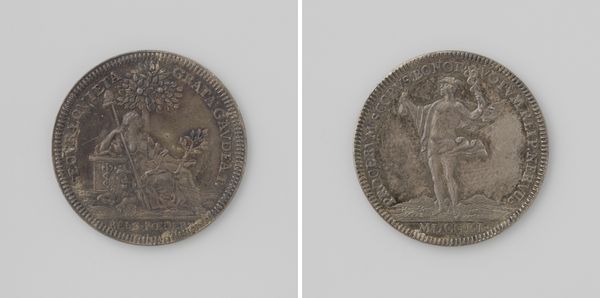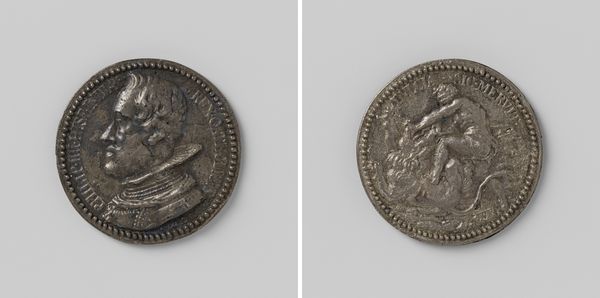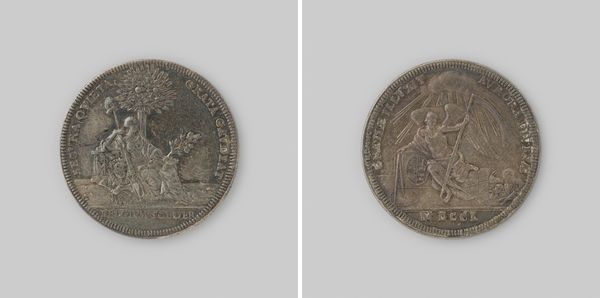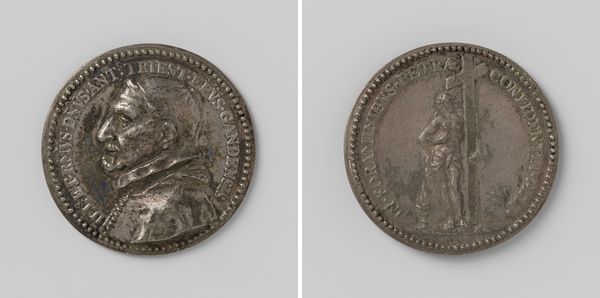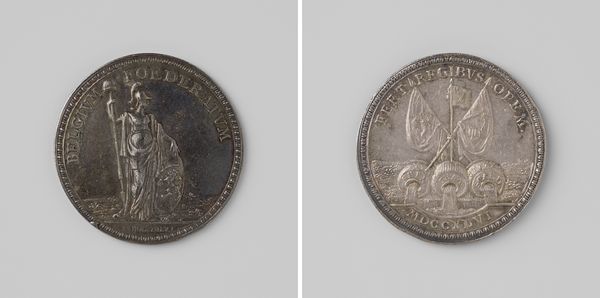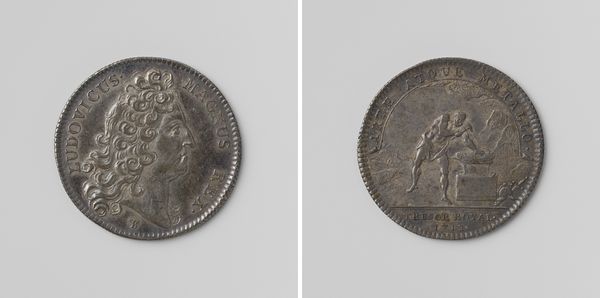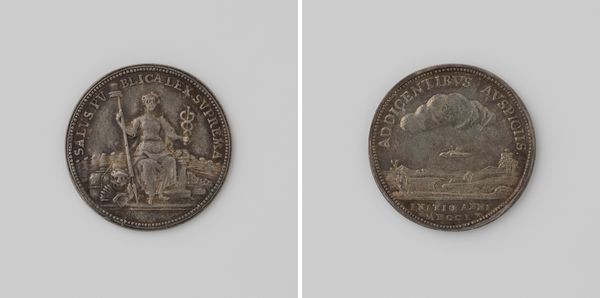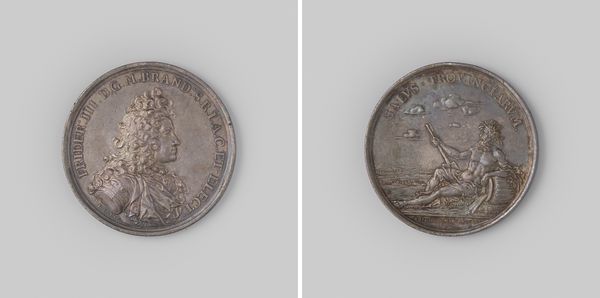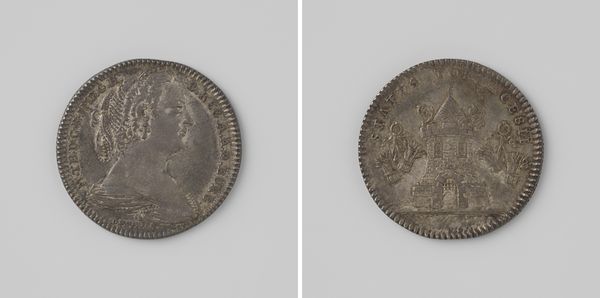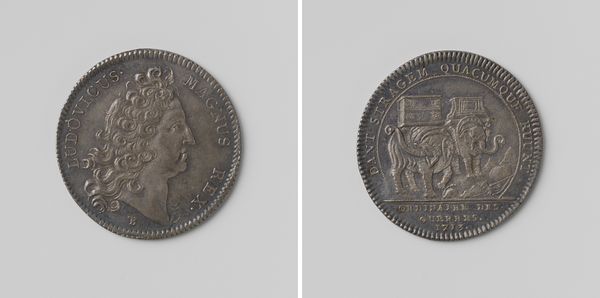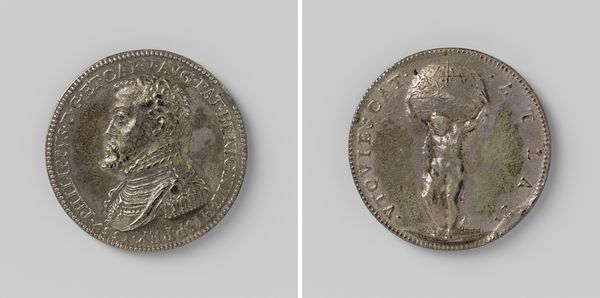
metal, sculpture, engraving
#
portrait
#
medal
#
baroque
#
metal
#
sculpture
#
sculpture
#
history-painting
#
engraving
Dimensions: diameter 2.6 cm, weight 4.58 gr
Copyright: Rijks Museum: Open Domain
Curator: This intricately crafted object is a New Year's medal, struck in 1750, although it commemorates 1751, by Johan George Holtzhey. The medium is, of course, metal. Editor: It strikes me as quite formal, very much of its time with a heavy emphasis on allegory. There is something both reassuring and slightly suffocating about its classical aspirations. Curator: Such medals served a crucial public function in the 18th century, disseminating political and social values. They were often commissioned by institutions like the city council in this instance, to shape civic identity. The choice of allegorical imagery reinforced this intent. Editor: On one side we see what appears to be a seated female figure leaning pensively on a tomb or altar, and behind her is what I interpret as an image of new life bursting from a bare tree. The image clearly has symbolic layers connected to transition and time, but also hinting at resurrection, quite powerful. Curator: Yes, Holtzhey cleverly uses classical iconography combined with baroque flourishes, common for the time, to emphasize concepts of civic virtue and prosperity for the coming year. The figure probably symbolizes Amsterdam offering her devotion. Editor: And the reverse depicts a rather vigorous figure of Mercury holding his caduceus and cornucopia in celebration and an air of success. It brings a certain feeling of bustling commercial life associated with Amsterdam at this time. Curator: Indeed, these images are calculated to resonate with very specific values: trade, prosperity, and a stable civic order all hallmarks of Amsterdam's self-image. Holtzhey produced many of these for various cities, a real sign of how city governments used art. Editor: It's a fascinating demonstration of how public art in a portable, almost mass-produced format like this served a key propaganda role. Its symbolism served a powerful function to instill the values the government wanted to instill. I also appreciate it as a snapshot of an era's ideals cast in enduring metal. Curator: Precisely. Objects like this are often overlooked when considering "art", but they reflect very powerfully the intersection of art, society, and power at any point in history.
Comments
No comments
Be the first to comment and join the conversation on the ultimate creative platform.
